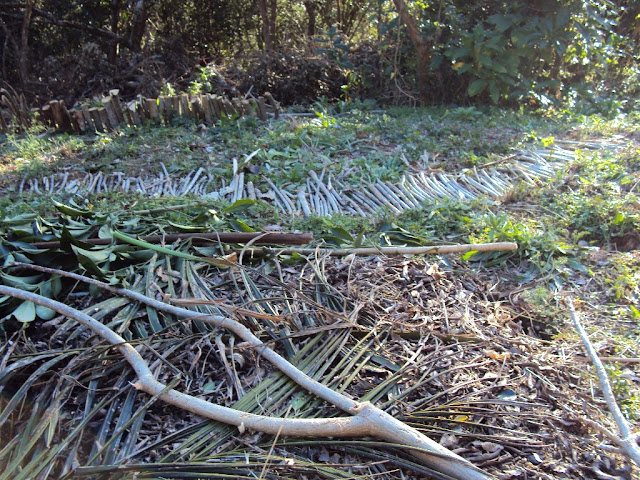It's winter and there's not much rain. The soil profile of this site is erratic - building rubble mixed with lovely soil, and in between there are large stones and even bigger rocks: the remains of the creation of the main gardens above the boundary wall that have gradually been dumped over into this, the fire-break zone. Digging around to find out what's going on beneath the surface is time-consuming, but in some parts of the site quite necessary. But we're trying to disturb the soil as little as possible in the effort to keep it from sliding off the very steep slope. The 'weeds' tell us where the soil is good, so we've decided to start making beds in places where they occur. We used the concept of a No-Dig Bed when making these beds, except we're not planting anything yet. We're just adding to the ground to begin building raised beds and terraces, as well as to keep the weeds down and prevent moisture loss:
 |
| Newspaper in the creation of the shape of the beds, with a narrow pathway in between... |
 |
| ..topped with a mixture of green leaves from the main gardens and a bit of manure, and then dead, dry grass we've sourced from the surrounding neighbourhood. People here just throw their garden refuse into the bushes... |
 |
| ..all topped off with more dead, dried leaves. This we'll leave for a while to rot and break down on its own |



























